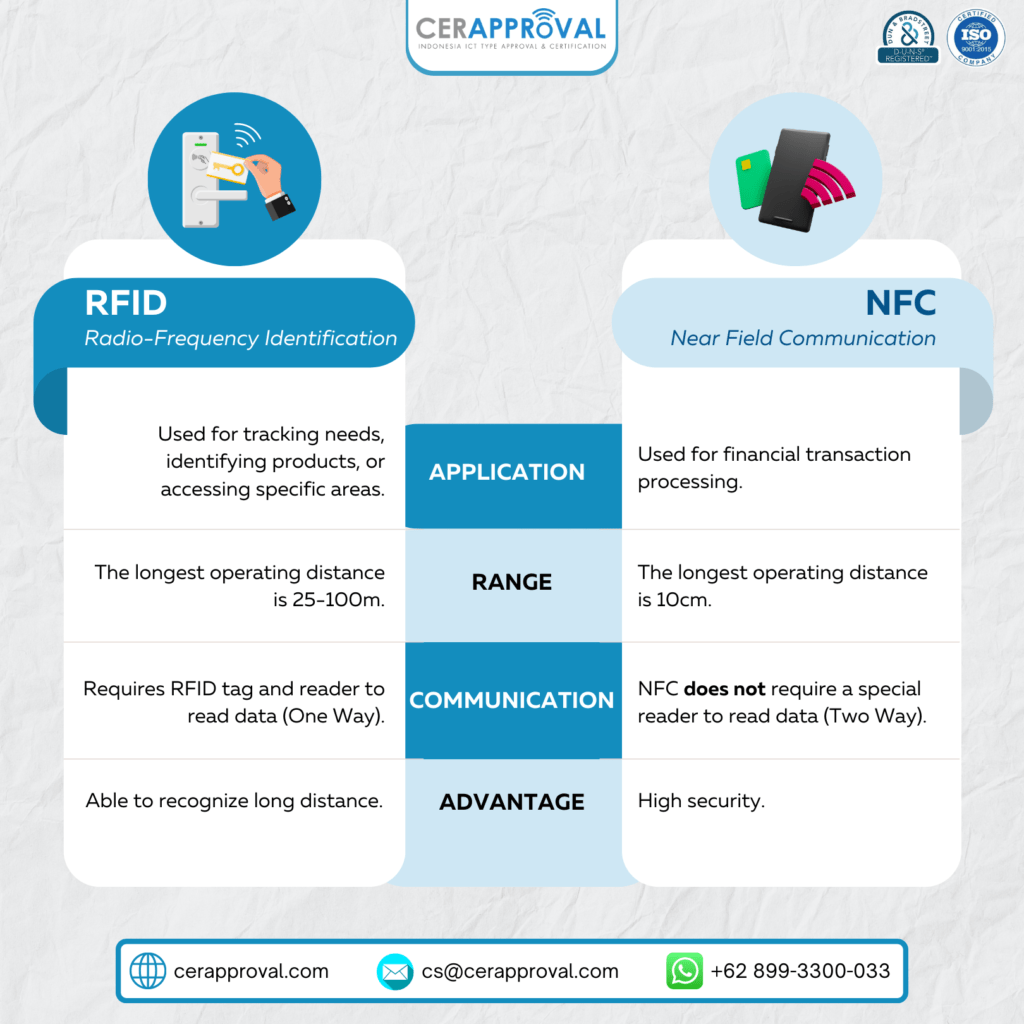What are RFID and NFC?
In this digital era, you must be familiar with the term NFC which is currently embedded in various devices, especially smartphones. Or maybe you are familiar when you go to a hotel to see a room door knob that uses a card. The technology usually uses RFID. RFID and NFC are two similar but different technologies.
Before discussing the similarities and differences, let’s get acquainted with NFC and RFID first. Radio Frequency Identification (RFID) is a small electronic device consisting of a chip and antenna. While Near Field Communication (NFC) is a technological innovation that can transfer data from one device to another.
RFID and NFC are two technologies that enable data exchange between devices. So, what are the similarities and differences between RFID and NFC?
RFID and NFC Similarities
The most prominent similarity between the two is in terms of the use of radio frequencies for wireless communication which usually operates at the same frequency, 13.56 MHz. In addition, other similarities are:
- Wireless identification: These two technologies are used for wireless identification and communication between the device or tag and the reader.
- Using tags: Both RFID and NFC use tags or labels to store information that can be read by a reader. These RFID tags or NFC devices can be applied to various objects such as products, cards, or other devices.
- Contactless technology: Both of these technologies are “contactless,” meaning communication can occur without the need for direct physical contact between the tag and the reader. This provides convenience in many applications such as payment, transportation ticketing, and access control.
- International standards base: Both have standards set by international organizations, such as ISO (International Organization for Standardization) for RFID and NFC Forum for NFC. This helps ensure interoperability and consistency in the use of these technologies.
Also Read: Short Range Device Frequencies for Indonesia-SDPPI
Differences between RFID and NFC
The two have significant differences :
- Working Principle
NFC: NFC has a working principle like Bluetooth and WLAN. It does not require a special reader to read the data (two way).
RFID: RFID will work if there is a tag (label) and a reader (reader). RFID tags contain information that can be read by the reader when it is within a certain distance.
- Communication Range
NFC: NFC is designed for very close communication, typically <10cm. This ensures security in data communication and is used in applications that require very close physical identification, such as contactless payments.
RFID: RFID has a greater communication distance than NFC. It typically ranges from 25-100m, depending on the frequency used.
- Application
NFC: NFC is commonly used in digital payments, data transfer between devices, and public transportation ticketing.
RFID: Used in various applications such as supply chain management, inventory tracking, access control to certain buildings or areas, and even in credit card reading at payment machines.

Also Read: SDPPI Telecommunication Tool and Device Certificate Fee
Since both technologies use radio frequencies in principle, they need to be certified in order to maintain interoperability, comply with applicable standards and legal provisions, and ensure consumer protection.
If you are a manufacturer, distributor, importer, laboratory, or other entity that wants to distribute telecommunication devices and needs Postel / SDPPI Type Approval Certification Services or wants to consult first, you can contact us at:




0 Comments